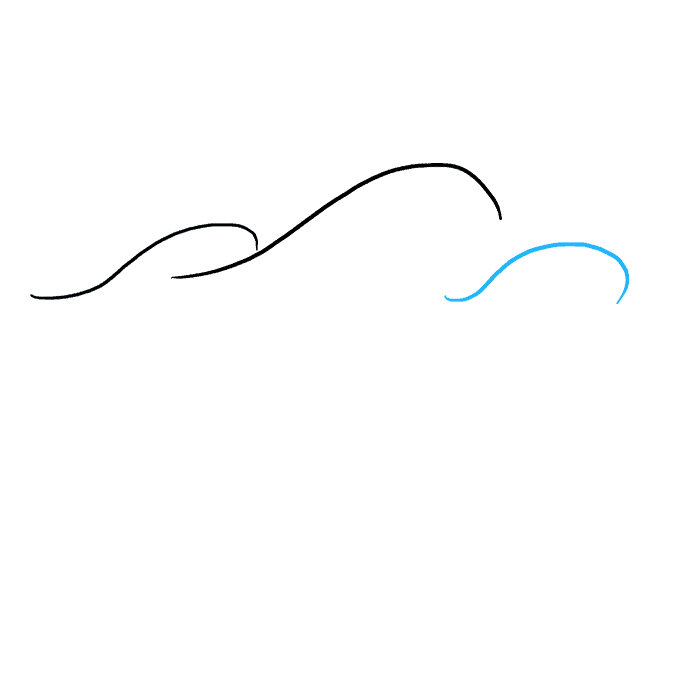How to Draw Waves With Pencil Easy

Click HERE to save the tutorial to Pinterest!
Waves result from the wind blowing across the surface of an ocean, sea, or lake. These waves, called wind waves, whip up the water, first into ripples. These ripples can grown to become hundreds of feet (tens of meters) high.
Groups of waves traveling in the same direction are called swells. Unusually large wind-generated waves are known as rogue waves.
Waves can also be caused by earthquakes beneath the seafloor. Very large and destructive waves of this sort are called tidal waves or tsunamis.
This type of wave can also originate with a falling meteorite or on underwater explosion.
Scroll down for a downloadable PDF of this tutorial.
Waves are an intrinsic part of any trip to the beach. Many people find the sound of crashing waves to be soothing, and they may wash delicate seashells ashore.
In addition to their beauty, waves are sought after as a component of some water sports, such as surfing and wind sailing.
Would you like to draw an ocean full of waves? Doing so is simple with the help of this easy, step-by-step drawing tutorial. You will need only a pencil and a sheet of paper.
In each step, you will see a detailed illustration in addition to explanatory text. Take special note of the blue lines in each picture; these indicate new lines to be added to your drawing.
When finished, you may wish to color your waves using colored pencils, crayons, markers, or paints.
If you liked this tutorial, see also the following drawing guides: Clouds, Nemo, and Boat.
Step-by-Step Instructions for Drawing Waves

1. Begin by drawing a curved line. This forms the crest of the first wave.

2. Draw another, larger curved line connected to the first. This forms the second wave.

3. Draw another curved line, forming another wave.

4. Every wave has a frothy portion at the top, often called a whitecap. Draw the whitecap of the central wave using a wavy, curved line.

5. Draw a whitecap on the small wave using a wavy, curved line.

6. Draw the whitecap on the remaining wave using a curved line. Complete the largest wave by drawing a curved line from its crest to the wave below it.

7. Draw another wave in the foreground. Use a long, curved line for its top and a squiggly line for the whitecap.

8. Add the detail of turbulence to the water. Draw wavy, curved lines between the waves.

9. Draw more wavy lines in the foreground. In the background, draw choppy water by allowing short, curved lines to come to a point.

10. Color your landscape.
Scroll down for a downloadable PDF of this tutorial.
Printable Drawing Tutorial
MEMBER TROUBLESHOOTING
Still seeing ads or not being able to download the PDF?
First, check that you're logged in. You can log in on the member login page.
If you're still not able to download the PDF, the likely solution is to reload the page.
You can do this by clicking the browser reload button.
It is a circular arrow-shaped icon at the top of the browser window, typically found in the upper-left side (you can also use keyboard shortcuts: Ctrl+R on PC and Command+R on Mac).
How to Draw Waves With Pencil Easy
Source: https://easydrawingguides.com/how-to-draw-waves-really-easy-drawing-tutorial/
0 Response to "How to Draw Waves With Pencil Easy"
Post a Comment